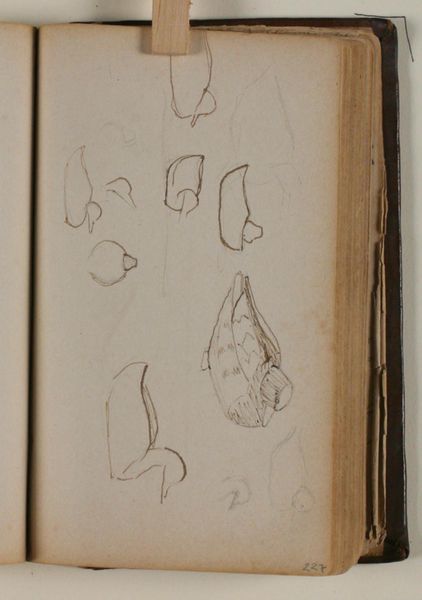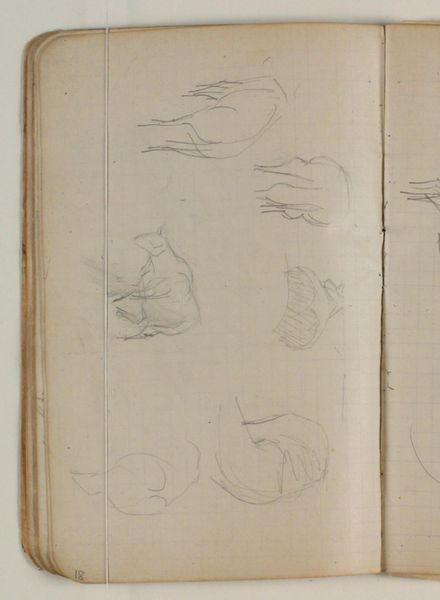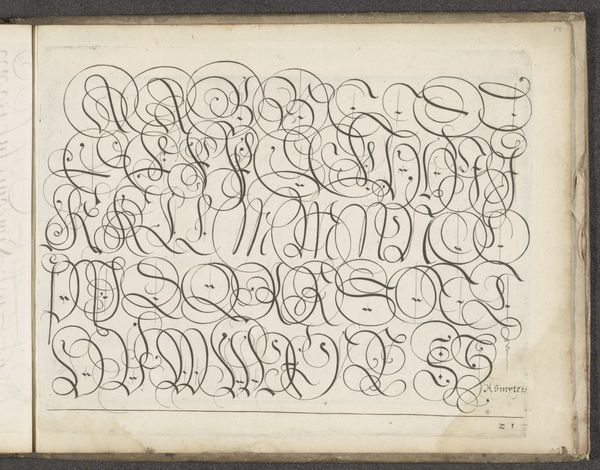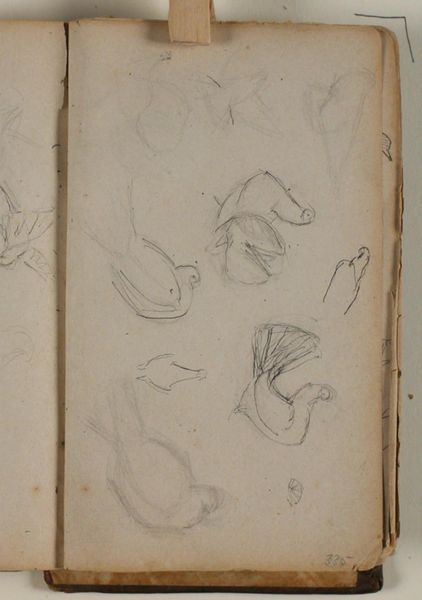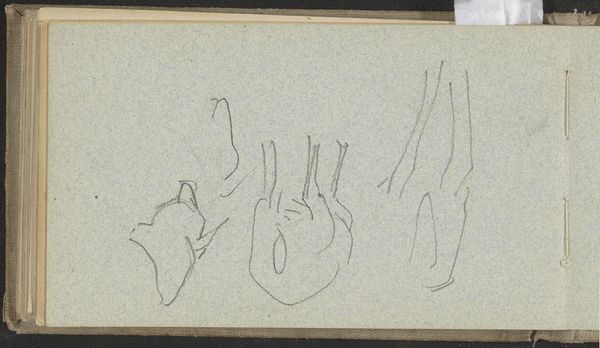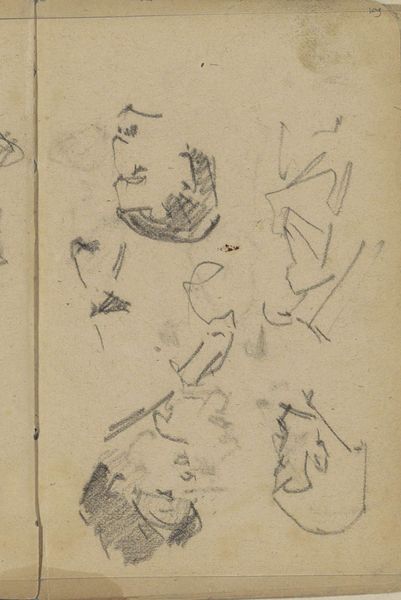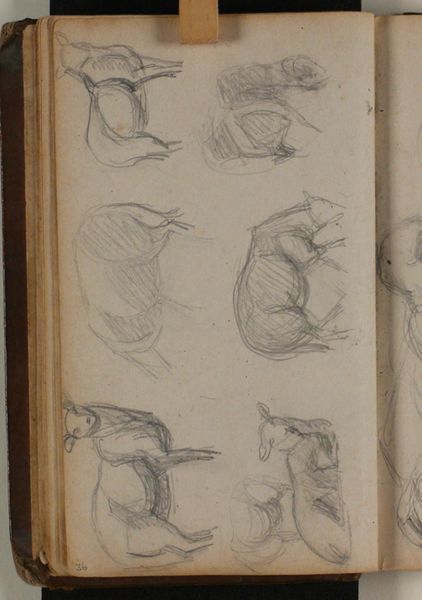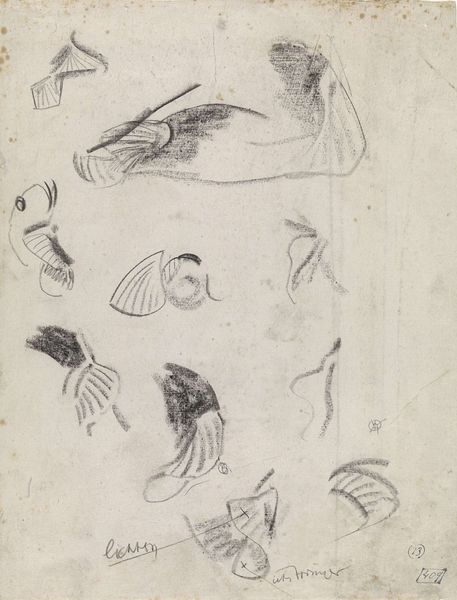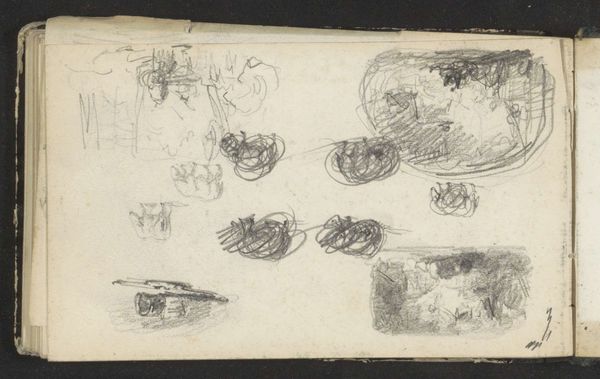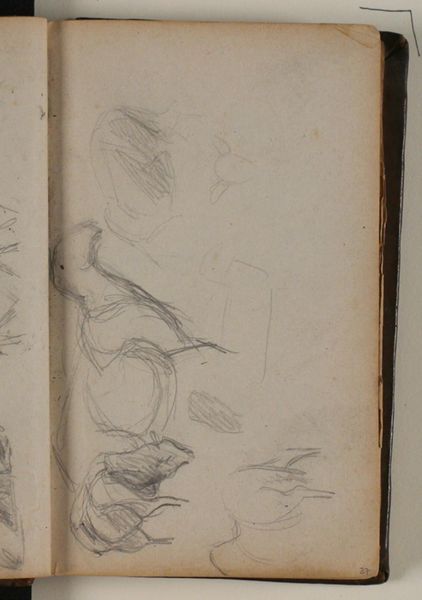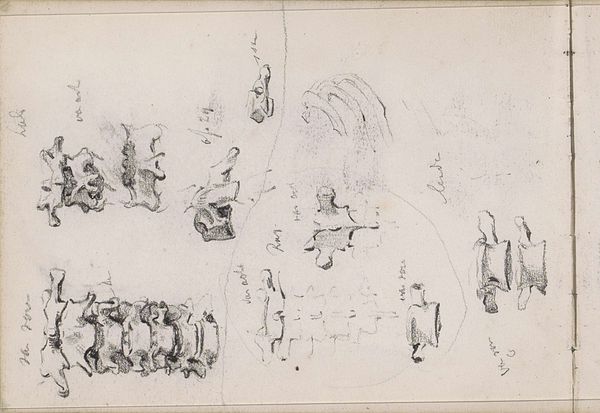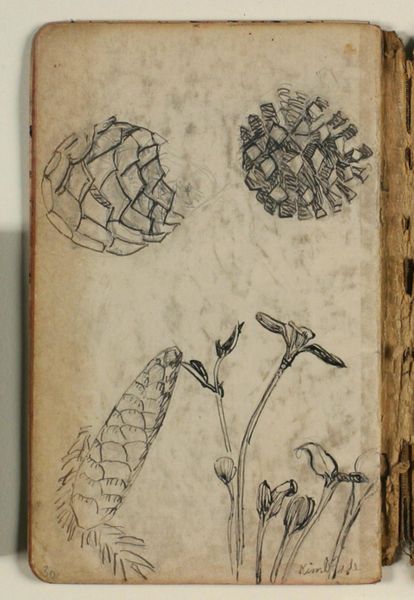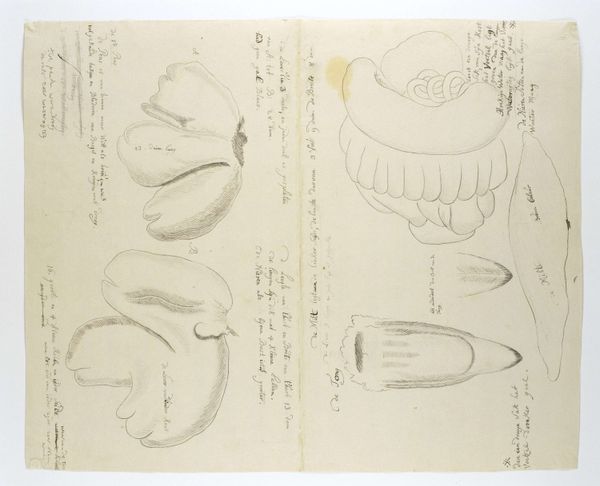
Studier af gotiske majuskler og slyngornament, med bogstavsangivelser 1919
0:00
0:00
drawing, ink
#
drawing
#
ink
#
geometric
#
calligraphy
Dimensions: 92 mm (height) x 174 mm (width) (bladmaal)
Editor: This is "Studies of Gothic Capitals and Tendril Ornament, with Letter Designations" by Niels Larsen Stevns, made in 1919 using ink on paper. The lettering is so elaborate, almost like intertwined knots. What significance do these particular Gothic letterforms hold? Curator: They hold layers of meaning. Think about the Gothic period itself, a time of immense cultural and spiritual investment in the written word. The forms aren't just decorative. They carry the weight of religious texts, illuminated manuscripts, the authority of the church. The very act of meticulously crafting these letters was a sacred endeavor. Do you notice how each letter feels self-contained, a miniature universe of lines? Editor: Yes, each one seems to have its own unique character. The "g" and the "d", especially, seem almost like faces. Why study them so closely, though? What's the point of revisiting these old forms? Curator: It is more than simple revivalism. The artist engages in a kind of cultural archeology. The symbolic memory of these letterforms remains powerful. Stevns might be asking how we can reclaim or reinterpret these symbols, which carry the collective unconscious of the Gothic era, for the modern world. Consider also the rise of nationalism at this time, and interest in national history and identity. How do forms like these root us? Editor: So, it’s not just about the letters themselves but what they represent about that past. It feels very much like the past brought back to life with a new energy! Curator: Precisely! By drawing on them, Stevns is accessing that potent symbolism, making it his own. He prompts us to consider the stories these forms carry. Editor: I see the lasting presence and re-interpretation of historical forms—it definitely highlights how art never truly exists in a vacuum.
Comments
No comments
Be the first to comment and join the conversation on the ultimate creative platform.
